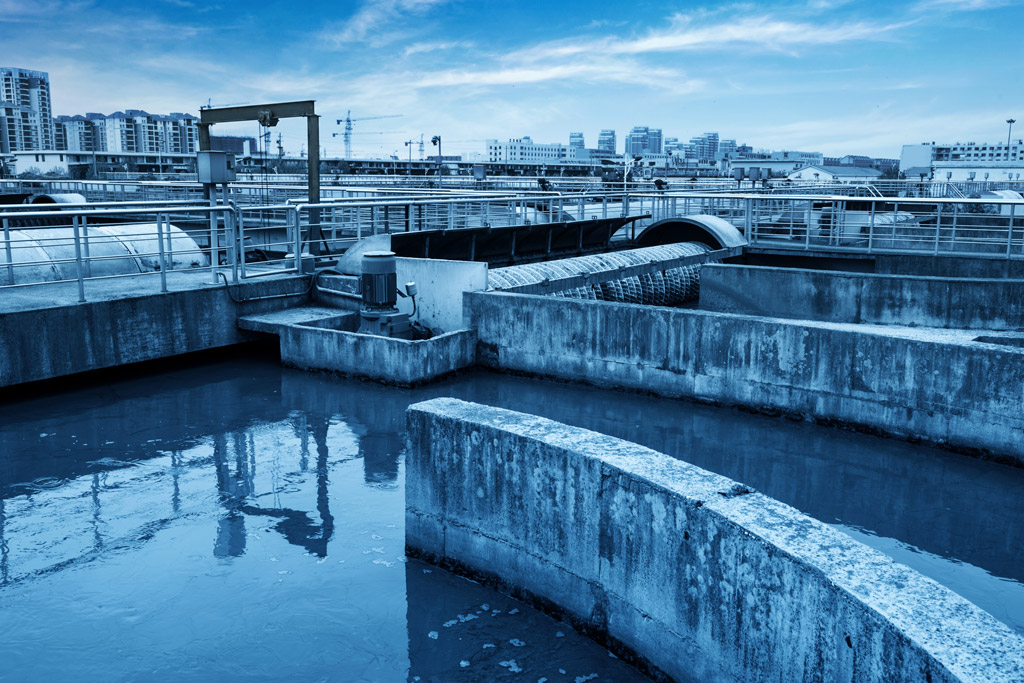

- Hydrogen sulphide (H2S) is extremely toxic.
- Methane (CH4) is a highly flammable gas
- Ammonia (NH3), ozone (O3), and chlorine (Cl2) are all toxic gases used in the decontamination stage of wastewater treatment and water purification plants.
- Carbon dioxide (CO2) displaces oxygen causing asphyxiation and affects respiratory capacity.

Gas hazards associated with wastewater plants and drinking water facilities are often underestimated. But both converting wastewater into a state suitable for discharge and transforming extracted supplies into clean water for civil use involve the employment and production of different toxic and flammable gases. As usual in these situations, reliable gas detection is the way of protecting personnel, facilities and the environment.
Although gas risk may vary depending on the application, location and treatment process, some of these are common to most plants.

In wastewater facilities the most common hazards involve methane, hydrogen sulphide, chlorine, carbon dioxide and oxygen depletion. These hazards originate from sources such as sewers, aeration tanks, sludge digester tanks and deodorizing plants. The aerating and sludge digestion processes are normally the most critical, with the production of biogases from sludge, including methane, hydrogen sulphide and carbon dioxide. Biogas is extremely flammable and is in fact nowadays collected and treated for energy production. But any leak from a digestor could lead to an explosion. Aerating processes are also used to remove Ammonia. Wastewater is then usually treated with chlorine before leaving the plant to be discharged.

In drinking water facilities gas hazards involve chlorine, sulphur dioxide, ammonia, ozone and chlorine dioxide. Usually, extracted supplies come in risk-free and it is only at the treatment/disinfection stage that chemicals are used, with the subsequent dangers. Chlorine is the most commonly used disinfectant, being also a legal requirement in many countries. But new technologies involving ozone or chlorine dioxide are becoming increasingly popular.
- Hydrogen sulphide (H2S) is extremely toxic. It has a notoriously distinctive odor at low concentrations (0.0047ppm). But as levels increase to over 150ppm, the human olfactory nerves are damaged, making it impossible to smell the gas even if it reaches the lethal concentration of 800ppm. H2S is both naturally present and produced in wastewater treatment. It is critical to monitor for H2S in sewers, sludge de-watering systems, anaerobic digesters, and wet/dry wells.
- Methane (CH4) is a highly flammable gas. In wastewater treatment it’s mostly produced during sludge decomposition. Monitoring of CH4 has to be ensured in raw sewage and sludge that enters de-watering systems, in anaerobic digesters, cogeneration facilities (where it is used to power the treatment facility) and wet/dry wells.
- Ammonia (NH3), ozone (O3), and chlorine (Cl2) are all toxic gases used in the decontamination stage of wastewater treatment and water purification plants. Gas detectors should be located near storage tanks and in process areas where they are employed.
- Carbon dioxide (CO2) displaces oxygen causing asphyxiation and affects respiratory capacity. In wastewater treatment it’s mostly produced during sludge decomposition and the production of Biogas. Monitoring of CO2 has to be ensured in raw sewage and sludge that enters de-watering systems, in anaerobic digesters, cogeneration facilities and wet/dry wells.





